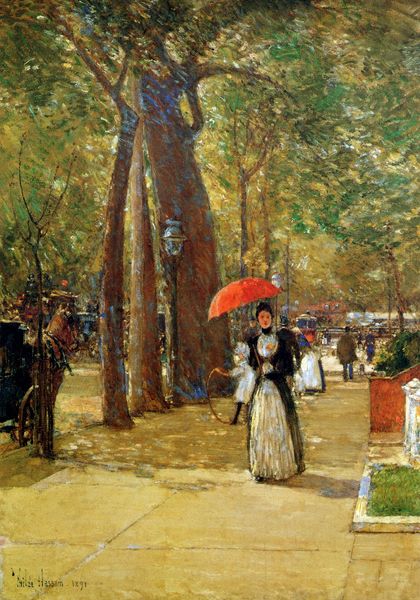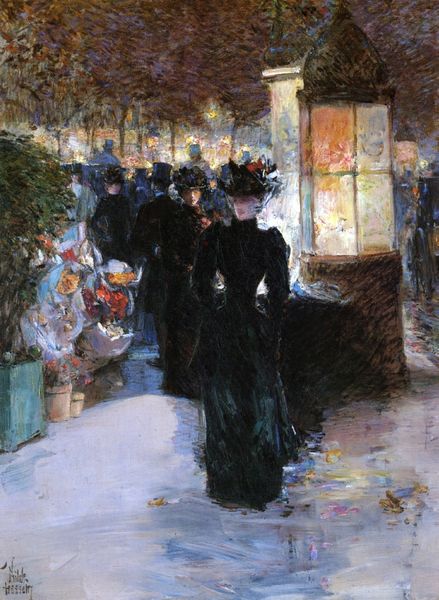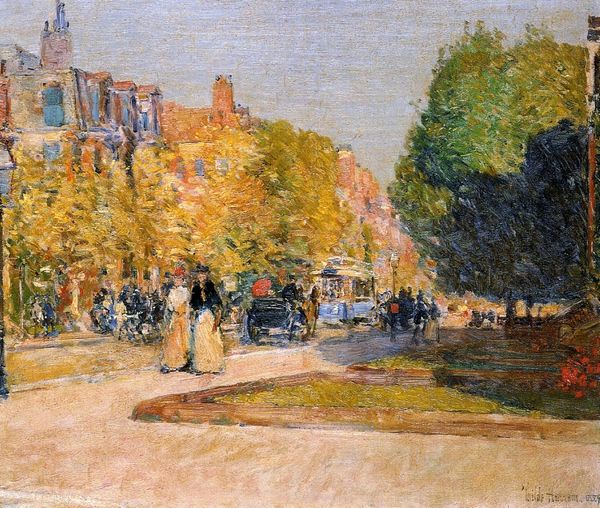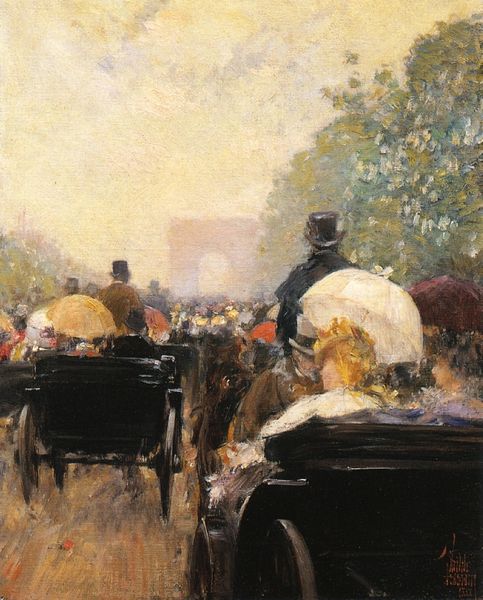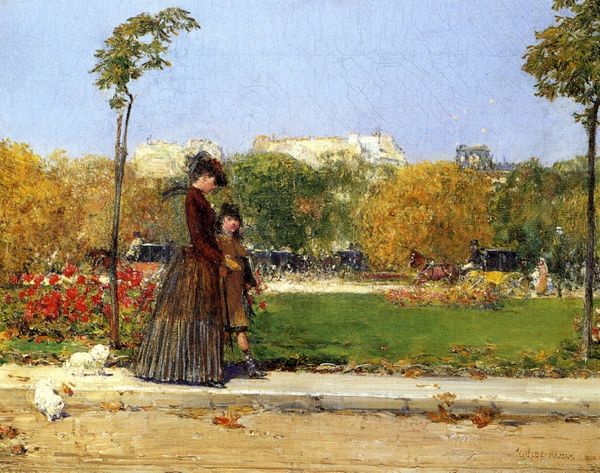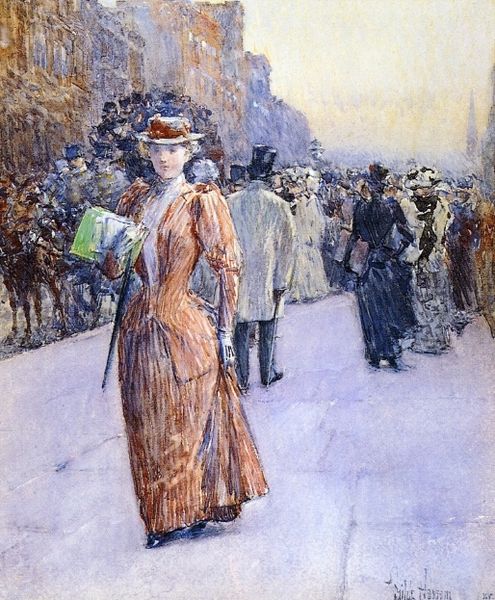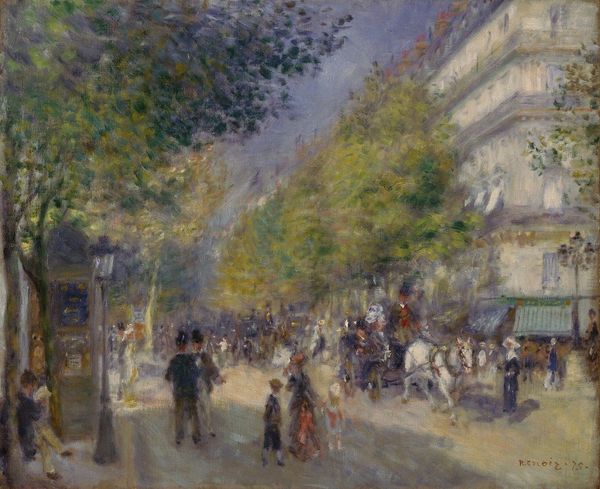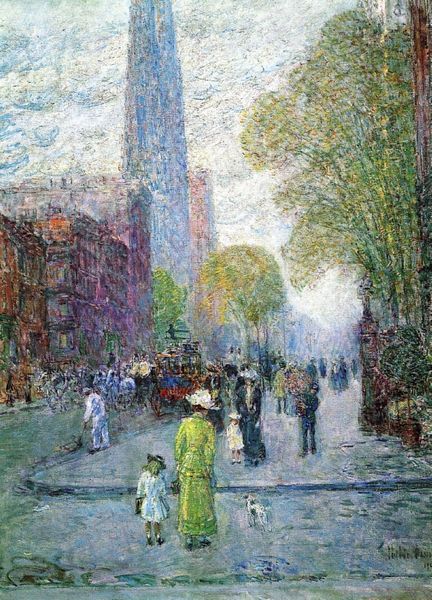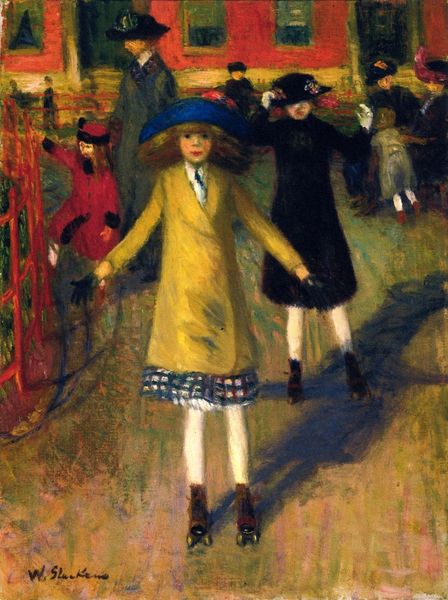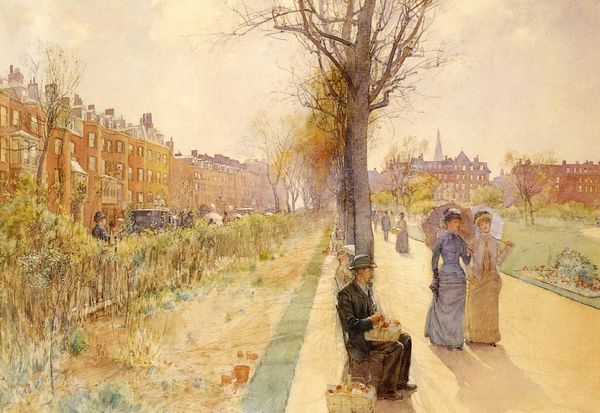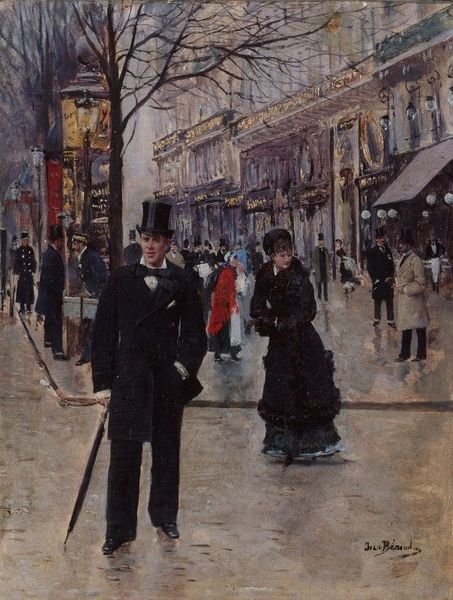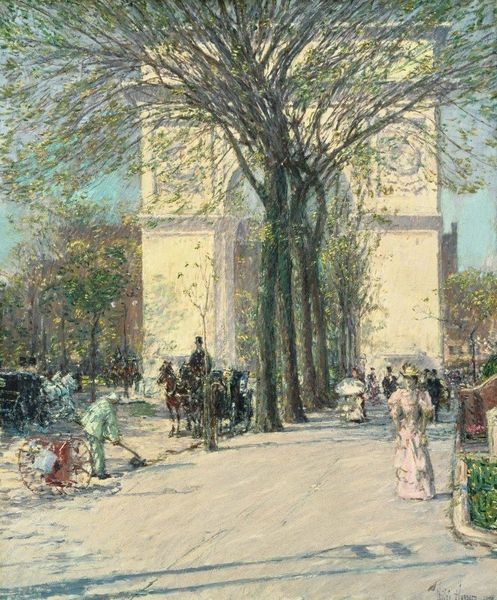
Copyright: Public domain
Curator: Childe Hassam painted "Sunday Morning" in 1897 using oil paint in the plein-air tradition, showcasing a leisurely cityscape scene. What are your immediate thoughts on the composition? Editor: It feels wonderfully serene. The dappled sunlight filtering through the trees immediately brings to mind a hushed, contemplative atmosphere. The upward perspective seems to draw me into a space outside myself. Curator: Hassam often portrayed modern life through the lens of Impressionism. Consider how social and economic forces influenced such portrayals. The leisure he depicts was increasingly possible for a burgeoning middle class. What can we learn from how social stratification influences what aspects of city life artists choose to portray? Editor: Right. It makes you wonder what's left out. While you can't see details of the faces clearly, everyone depicted seems fairly well-to-do. The architecture is fairly nondescript in the background, but the figures' silhouettes reveal an element of upper-class fashion. These elements combine to communicate particular aspirations, attitudes, and values. I also find that Hassam relies on certain symbols, like the lamp post or specific flowers, that recur in art history representing prosperity, elegance, and social standing. Curator: Absolutely, Hassam strategically omits, edits, and directs our gaze. I'm thinking of Judith Butler's work on performativity, or Tricia Rose's work on black cultural production and exclusion from dominant representations, to show how these visual economies structure societal possibilities and oppressions. Editor: The choice of colours also seems symbolic to me, in how soft, airy colours blend into form. These colors echo what viewers might think about the American aristocracy during that era. Light, almost transparent...a very refined image they may want to portray about themselves and project to the world. Curator: I agree. His soft brushstrokes contribute to that fleeting momentariness that is so tied to Impressionism and late 19th-century notions of modernity and change. Even though it's seemingly quaint and "of the past", it's still very evocative and revealing when we analyze its politics. Editor: Seeing it this way opens it up. Instead of simply observing, now we engage, question, and unpack visual clues embedded in its texture. This opens up paths toward meaningful insight.
Comments
No comments
Be the first to comment and join the conversation on the ultimate creative platform.
